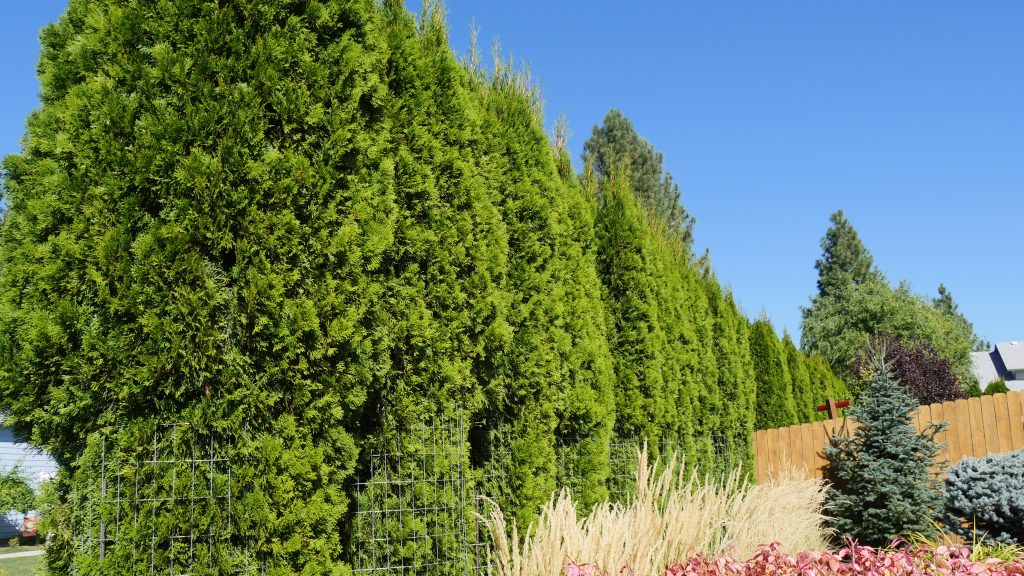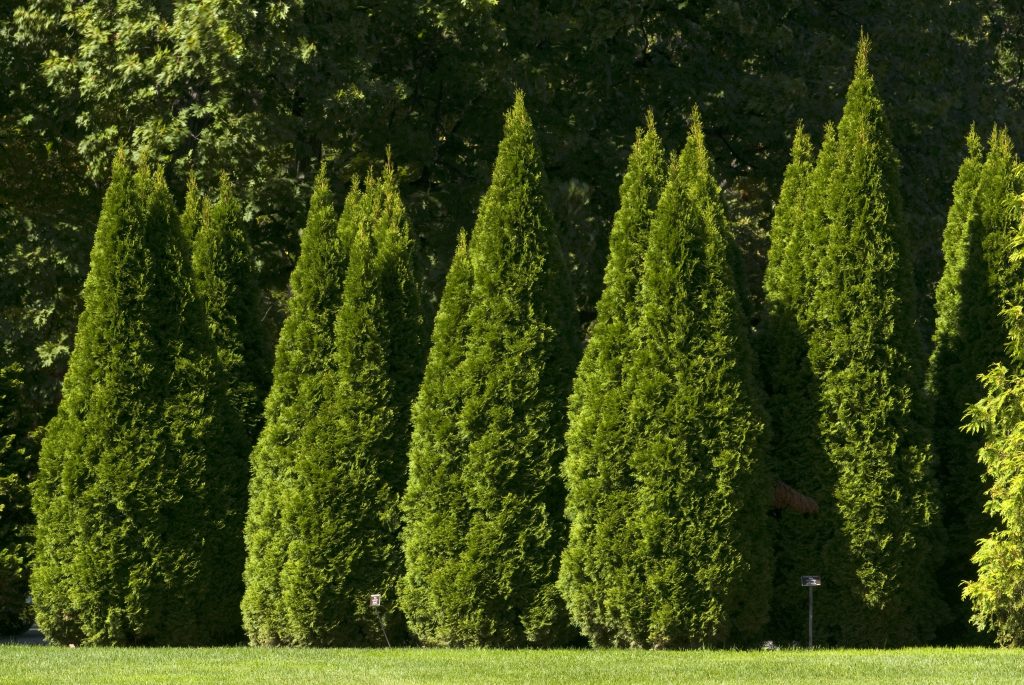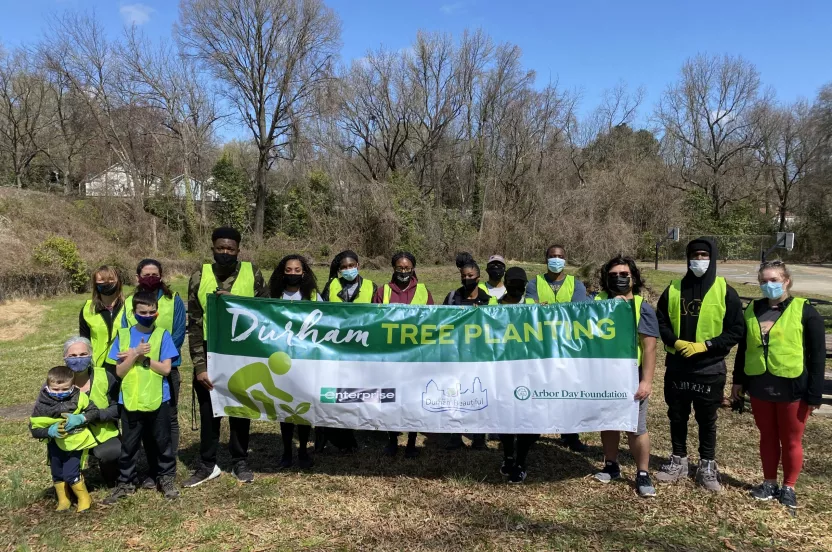Now live: The 2025 Canopy Report. Learn how Americans see trees. GET THE REPORT
Are you looking for an affordable way to create privacy in your yard? There are several benefits to plant a privacy hedge in the landscape. Evergreen trees or shrubs can provide privacy from street traffic and neighbors and create a sound barrier to reduce noise. The trees can also act as a windbreak from harsh winds and snow. Best of all, planting a privacy hedge means you can enjoy all the benefits of trees, like clean air, less stormwater runoff, shade, and beauty.
Before Planting
Determine the type of tree that will suit your needs. Evergreen trees are great for year-round screen and reducing noise. But deciduous trees can add landscaping elements like spring flowers or fall colors. Evergreen trees are popular when it comes to a privacy hedge, but you can also plant a mix of evergreen and deciduous trees to create a screen and texture.
Read 5 Tips to Landscape with Trees
Another factor to consider before planting is how high you want your screen to be. The nice thing about evergreen trees is many of them grow high but can be trimmed down just as easily. Arborvitae are among the most popular evergreens used when planting a hedge. They are often easy to maintain, grow in a variety of conditions, and provide great screen. Below are a few of the most popular options.
Tall and elegant, the American arborvitae may be the right solution to your landscaping challenges. The narrow, pyramid shape makes it a natural choice for windbreaks. It requires almost no care when used as a hedge or screen. Pairs of these hardy trees make great accents for doors and garden gates. And single trees soften house corners.
Grows 40'–60'
Hardiness zones 3–7
Green Giant arborvitae is a hybrid cross between western redcedar and Japanese arborvitae. It is a large, hardy evergreen with a pyramidal to conical, uniform appearance. The dense, scale-like foliage in flattened sprays on horizon or ascending branches is a lustrous, medium green color that darkens or bronzes only slightly in winter. The leaves have a faint, pleasant fragrance.
Grows 50'–60'
Hardiness zones 5–7
Shimmering emerald green foliage and a classic narrow, pyramidal form make the emerald arborvitae attractive in all seasons. And unlike other arborvitaes, this cultivar keeps its lustrous color even in the cold winter months.
Grows 10'–15'
Hardiness zones 3–7
Read Full Sun, Partial Sun, Does it Really Matter?
Rows and Spacing
The amount of space you have and how dense you’d like your screen to be will determine how many rows you plant. The spread of the tree will determine the spacing between each tree. A good rule of thumb is to plant at least 12" –24" apart from the center of the tree. many evergreen trees may be spaced out anywhere from 6 to 12 feet, depending on the species. American arborvitae can be planted as close as three feet.
Maintaining your Hedge
It will take a couple of growing seasons for your trees (or shrubs) to establish. Once they do, you can trim off the top and sides a few times per year as necessary to maintain your desired height/look. Many of the trees will grow naturally as a hedge or screen and require little to no maintenance.
Trees make a beautiful and long-lasting privacy screen and they are multipurpose. It may take several years before slow-growing species provide any cover, but the beauty and grace they add to your landscape will make your home standout.
Visit arborday.org to read more tips on planting a privacy hedge.






